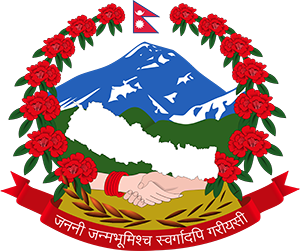About the project
Title of the Project: Improving climate resilience of vulnerable communities and ecosystems in the Gandaki River Basin, Nepal
Accredited Entity: IUCN Hqs/Asia Regional Office
Executing Entity: Ministry of Forests and Environment
Technical Assistance providers: IUCN Nepal and NTNC
Geographical area: 20 Districts of Gandaki River Basin
Total budget: US$ 32.715 M
US$ 27.404 million grant from GCF (Programme 95.5%; management 4.5%)
US$ 5.31 million Co-financing in kind by the
Government ($1.145M),
NTNC ($3.6 M) and
IUCN ($0.565 M)
Duration: 7 years (August 2021 to July 2028)
Fund Flow
The full budget is US$ 32,714,530, including national co-financing in an amount of US$ 5,310,391. In accordance with the FAA, US$ 23,973,749 will be transferred by IUCN to MOF, which will be further channelled by MOF to MOFE to execute the project activities out of which MOFE will transfer US$ 7,938,496 to NTNC on the basis of performance and work plan to facilitate the execution of the Project activities on the ground. In accordance with the FAA, US$ 3,430,390 will be directly executed by IUCN to provide required technical support to the project as per Annex 2 Funding Proposal.
Beneficiaries
Seven sub-basins in the Gandaki River Basin (GRB) namely Badigad, Budigandaki, Kaligandaki, Madi, Marshyangdi, Rapti and Trishuli are the major beneficiaries of this project. There will be 198,016 households (833,647 people (65% female)) directly benefiting from the project and 250,000 households (1,052,500 people (60% female)) indirectly benefiting from project implementation.
Objectives and expected results
Objective: To improve resilience of the communities and ecosystems in the GRB Impact: Improved resilience of vulnerable communities and ecosystems in the Gandaki River Basin Paradigm shift: Shifting planning and adaptation from political boundary approach to river basin approach Mainstream and operationalize a river-basin approach sustainably for watershed management to achieve resilience of climate vulnerable communities and ecosystem in the Gandaki River Basin
Outcomes and Outputs
Component 1: Community resilience
Outcome 1: Enhanced resilience of livelihoods of the vulnerable communities through adapting to climate change sustainably
Output 1.1: Climate resilient agroforestry and livelihood improvement actions implemented for coping with extreme events
Output 1.2: Interventions for water availability and water use efficiency from irrigation systems and improved water sources implemented
Component 2: Ecosystem resilience
Outcome 2: Strengthened climate resilience of ecosystems
Output 2.1: Natural ecosystem restoration based actions implemented for reducing impacts of landslides and floods
Output 2.2: Technical capacity of GRB communities enhanced in maintaining and supporting climate resilient ecosystems
Component 3: Climate governance
Outcome 3: Strengthened climate governance and institutional framework to sustain climate
Output 3.1: Community-based mechanism for planning, restoration, monitoring, and maintenance of ecosystems established
Output 3.2: Ecosystem-based climate change adaptation approaches incorporated into government policies & plans
Output 3.3: Knowledge management established for climate resilient River Basin Management
Provincial Coordination Unit (PCU)
PCU in each province (Gandaki, Bagmati and Lumbini provinces) has been formed to provide technical backstopping, participate in joint monitoring, mainstream project learning into provincial/local government policies and programmes, and provide policy guidance to the Field Execution Offices (FEO). The PCU is hosted by the Provincial Ministry of Forests and chaired by a senior technical official assigned by the ministry of the concerned province. The chief of Basin Management Center serves as Member Secretary of PCU.
Field Execution Office (FEO)
Field activities will be executed through two federal offices under DoFSC, namely Basin Management Centre Gandaki, Kaski and Federal Watershed Management Resource Centre, Kulekhani. They will be supported by two FEOs as follows:
FEO Kaski – covering Manang, Mustang, Myagdi, Baglung, Parbat, Kaski, Syangja, Palpa, Arghakhanchi, Gulmi
FEO Kulekhani – covering Rasuwa, Nuwakot, Dhading, Makawanpur, Gorkha, Lamjung, Tanahu, Chitwan, Nawalparasi (Nawalpur)
The FEOs will be set-up at the start of the project. NTNC will assign relevant staff to each FEO. As the FEOs will be housed in Basin Management office premises in Kulekhani and Kaski, the Field Officer Assigned by NTNC will serve as a Coordinator of the FEO.
For More Details


